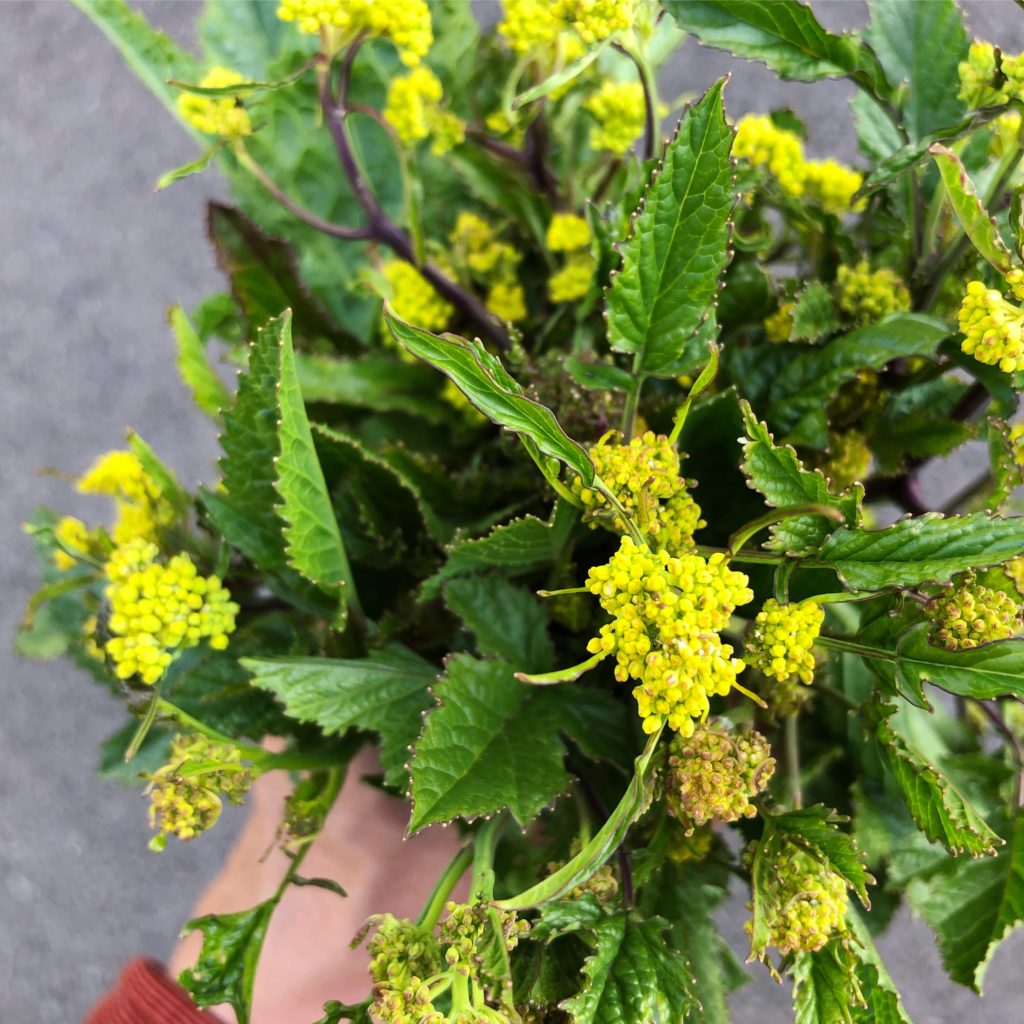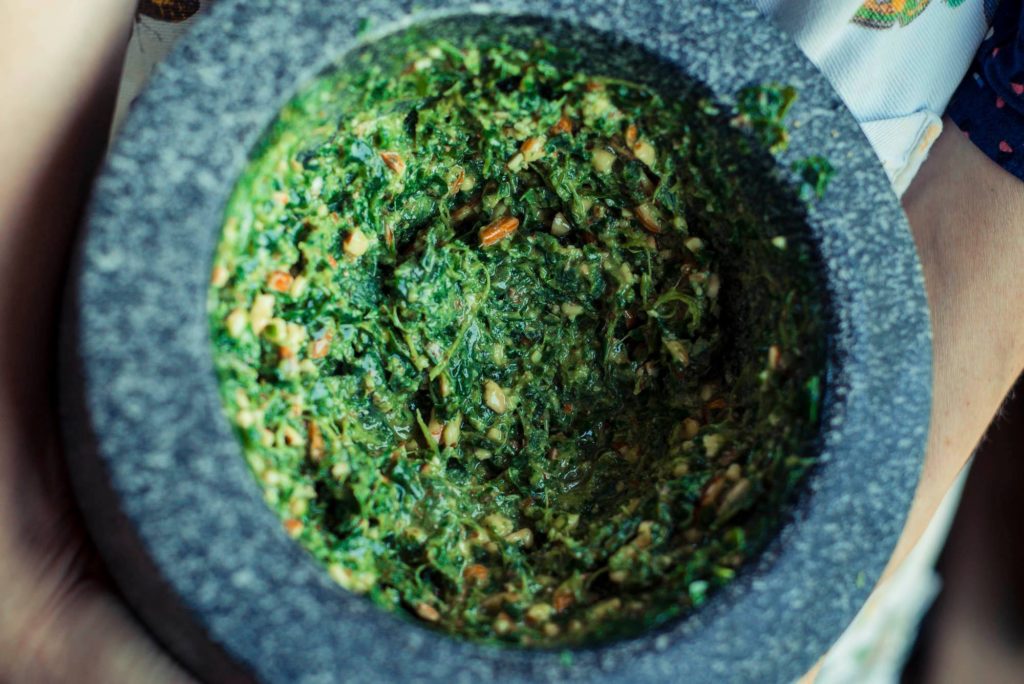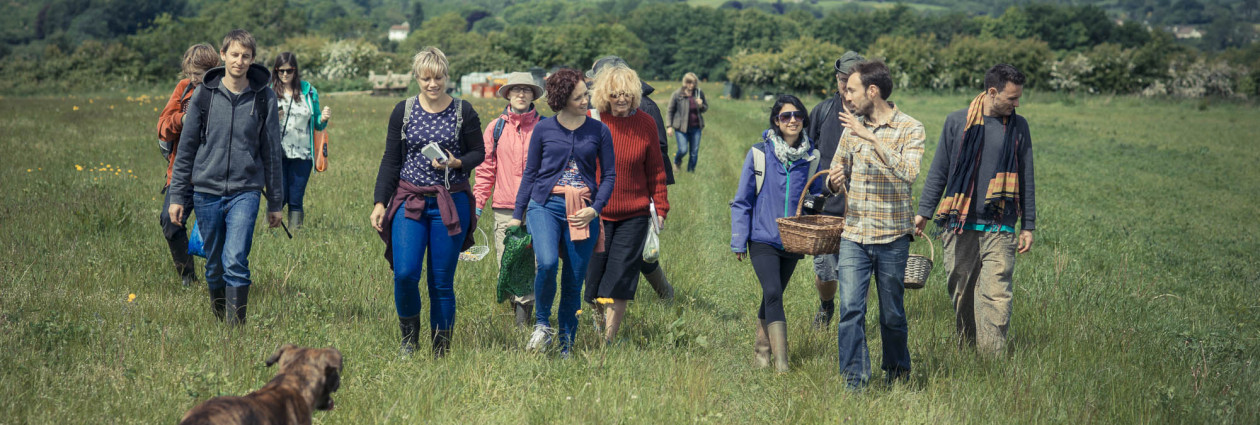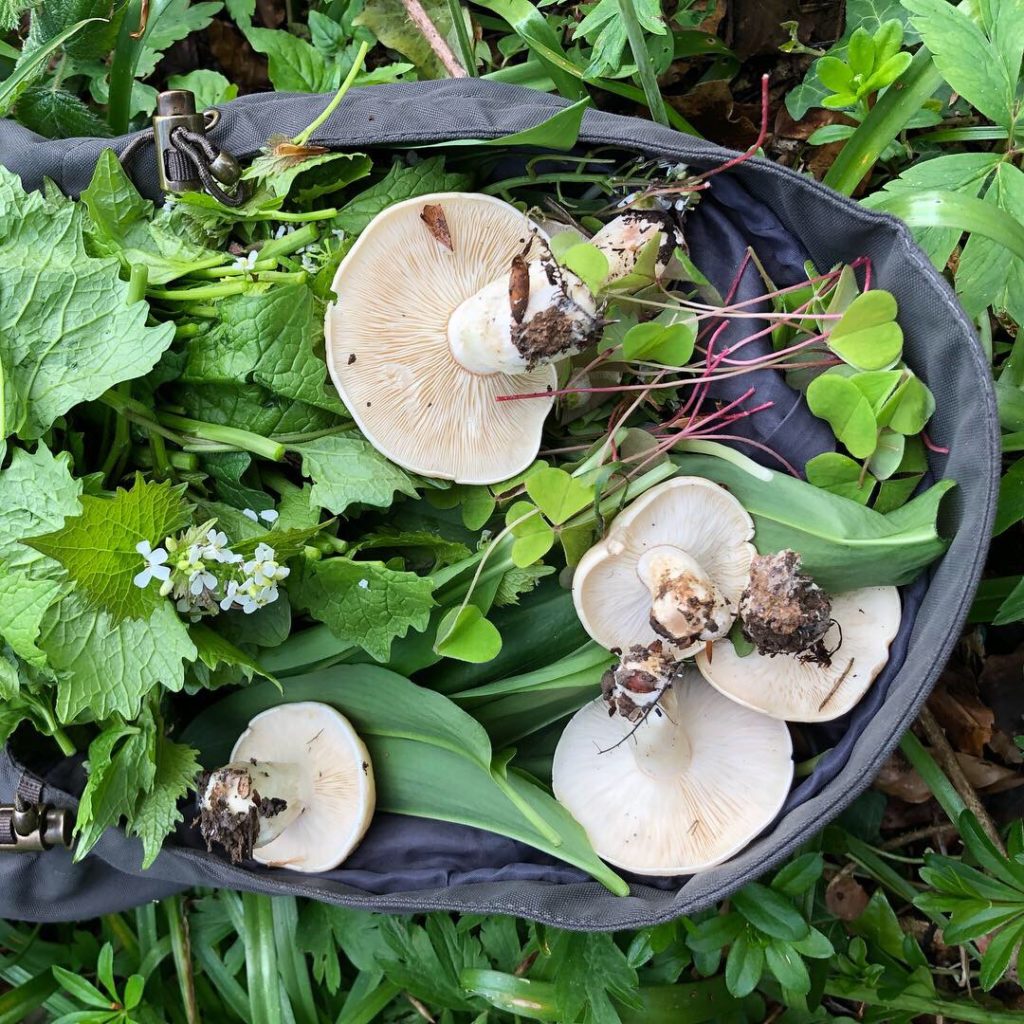Wild garlic pesto is a classic forager’s favourite. At the time of writing (early May) the leaves are starting to look a bit tired as the plant puts it’s energy into the those beautiful, star shaped flowers. Mustard leaves however are plentiful through May and June and make great pestos with a firey kick. Look for black mustard (pictured below) leaves in allotments and coastal locations. You can add wild or shop bought fermented mustard seeds to your pestos – Jack by the hedge (a type of super common wild mustard) seeds are the easiest to harvest. I just wait until June when the seeds have dried and turned black in their elongated pods. The simplest way to harvest is to place a bag over the top of the plant and shake the plant to release seeds into your bag.
Mustard Seed Fermenting Method:
140 g yellow mustard seeds
140g brown mustard seeds
420ml filtered water
50g apple cider vinegar
1 teaspoon of honey
13g sea salt
- Make a brine by adding sea salt to mineral water.
- Add to your brine mustard seeds, a dash of apple cider vinegar, and a little honey. You can add a little sauerkraut juice to help start the fermentation process. This is optional and it will likely be okay without it.
- place mixture in a jar. Leave out at room temperature for 3-4 days, stirring each day.
- Strain any excess liquid and enjoy!
Wild Mustard and Dill Pesto:
- Combine your wild leaves with nuts of your choice (I love cashews and hazelnuts best), olive oil, salt and lemon juice.
- Add cheese if you wish. Hard and flavoursome goat’s cheese, parmesan or pecorino are good choices.
- As always, I just add small amounts of everything and taste as I go. Have fun and play with your food!
Try also making pesto with Jack by the hedge, wild garlic (seeds, leaves, stems) and sea radish leaves.



